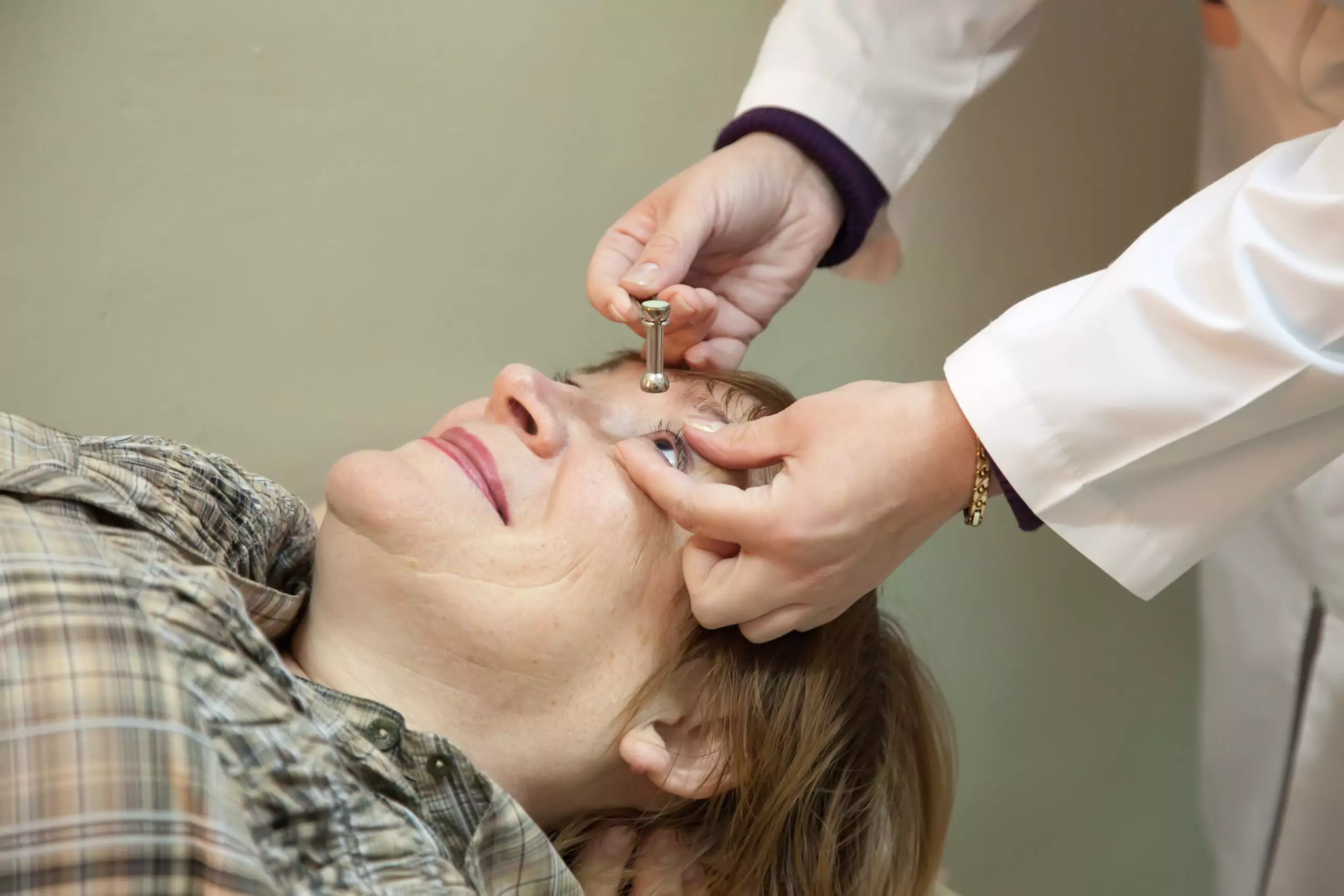What Causes Glaucoma?
Strong vision depends on many factors, not least of which is the health of the optic nerve. The optic nerve is a bundle of nerve fibers that transfers information from the eyes to the brain, and glaucoma is a group of conditions that damage the optic nerve. This is why it’s important to understand what the causes—and risk factors—of glaucoma are.
What are the causes of glaucoma?
Glaucoma is the result of damage to the optic nerve. Blind spots will develop in your field of vision as the optic nerve deteriorates slowly over time. Doctors do not yet fully understand why optic nerve damage is usually connected to increased pressure in the eye. Increased eye pressure is also commonly known as intraocular pressure (IOP).

Regular comprehensive eye exams, which include a test of your intraocular pressure, are important to detect glaucoma early.
(This image is by @bearfotos on Freepik.)
Your eye produces a fluid called aqueous humor, which bathes the eye and brings it nutrients. After doing its job, this fluid normally drains out through a tissue, called the trabecular meshwork. The trabecular meshwork is located at the angle, or anterior chamber, where the cornea and iris meet.
An increase in eye pressure occurs when the fluid builds up. This can either be due to overproduction or blocked drainage. When there is too much fluid, it can’t flow out of the eye as it normally would, which increases your IOP.
In terms of additional glaucoma causes, research shows that glaucoma tends to run in families. Scientists have also identified genes that are connected to high eye pressure and optic nerve damage in some people.
What are the most common types of glaucoma?
The causes of each type of glaucoma are differentiated by the source of inadequate drainage and heightened pressure.

Your eye care doctors will determine what type of glaucoma you have at your appointment.
(This image is from Freepik.)
The primary types of glaucoma include:
- Open-angle glaucoma: The drainage angle formed by the cornea and iris remains open, but the trabecular meshwork is partially blocked. This causes pressure in the eye to gradually increase.
- Angle-closure glaucoma: The iris bulges toward the front of the eye, blocking the drainage angle formed by the cornea and iris. People who already have narrow drainage angles are at higher risk of angle-closure glaucoma. Angle-closure glaucoma can be chronic or acute. An acute case is considered a medical emergency.
- Normal-tension glaucoma: Damage occurs even if your eye pressure is within the normal range. Experts think this may be due to either a sensitive optic nerve or insufficient blood supply to the nerve, which is caused by health issues that affect circulation.
- Pediatric glaucoma: Incomplete or incorrect development of eye drainage systems in utero can result in children being born with glaucoma. The optic nerve can also sustain damage from an underlying health condition.
- Pigmentary glaucoma: Granules of pigment from your iris flake off and clog the drainage channels in your eye. Jogging and impact sports can also disturb granules. This causes them to resettle in areas that affect drainage, sometimes temporarily.
What are the risk factors for glaucoma?
Increased internal eye pressure from any cause can elevate your risk for glaucoma.

While glaucoma can occur at any age, people ages 60 and up—or age 40 and up for Black people—are at higher risk.
Studies have determined, however, that the following factors can also place you at a higher risk:
- Age 60 and up (though glaucoma can occur at any age)
- Black, Asian, or Hispanic racial or ethnic group
- Close family history of glaucoma
- Certain health conditions (diabetes, heart disease, hypertension, and sickle-cell anemia)
- Corneas that are thin at the center
- Extreme nearsightedness or farsightedness
- Eye injury or eye surgery
- Extended corticosteroid use
Most forms of glaucoma progress slowly and with no noticeable symptoms in the early stages. Without regular eye checkups, glaucoma often goes undiagnosed until considerable damage has already been done. Existing impairment cannot be reversed, but further vision loss can often be prevented if the disease is identified and treated early.


